 Movies and TV
Movies and TV  Movies and TV
Movies and TV  History
History 10 Things You Didn’t Know About the American National Anthem
 Technology
Technology Top 10 Everyday Tech Buzzwords That Hide a Darker Past
 Humans
Humans 10 Everyday Human Behaviors That Are Actually Survival Instincts
 Animals
Animals 10 Animals That Humiliated and Harmed Historical Leaders
 History
History 10 Most Influential Protests in Modern History
 Creepy
Creepy 10 More Representations of Death from Myth, Legend, and Folktale
 Technology
Technology 10 Scientific Breakthroughs of 2025 That’ll Change Everything
 Our World
Our World 10 Ways Icelandic Culture Makes Other Countries Look Boring
 Misconceptions
Misconceptions 10 Common Misconceptions About the Victorian Era
 Movies and TV
Movies and TV The 10 Coolest Stars to Set Sail on The Love Boat
 History
History 10 Things You Didn’t Know About the American National Anthem
 Technology
Technology Top 10 Everyday Tech Buzzwords That Hide a Darker Past
Who's Behind Listverse?

Jamie Frater
Head Editor
Jamie founded Listverse due to an insatiable desire to share fascinating, obscure, and bizarre facts. He has been a guest speaker on numerous national radio and television stations and is a five time published author.
More About Us Humans
Humans 10 Everyday Human Behaviors That Are Actually Survival Instincts
 Animals
Animals 10 Animals That Humiliated and Harmed Historical Leaders
 History
History 10 Most Influential Protests in Modern History
 Creepy
Creepy 10 More Representations of Death from Myth, Legend, and Folktale
 Technology
Technology 10 Scientific Breakthroughs of 2025 That’ll Change Everything
 Our World
Our World 10 Ways Icelandic Culture Makes Other Countries Look Boring
 Misconceptions
Misconceptions 10 Common Misconceptions About the Victorian Era
Top 10 Bloody 20th-Century Mysteries We’ll Probably Never Solve
The 20th century has had its fair share of mysteries. Some of them are still hotly contested today—the disappearance of Amelia Earhart, the identity of D.B. Cooper, the Black Dahlia murder, etc. Others, however, haven’t been a talking point in years, perhaps even decades. That’s either because they have been long forgotten or because people are content with the unofficial “truth.”
10 Was The Shotgun Man Real?

Early 20th-century Chicago was a dangerous place for Italian immigrants living in Little Sicily. Black Hand extortion was a popular racket practiced by many criminals with no connections to each other. They knew that most people were scared enough to pay. Otherwise, these people would be visited by the Shotgun Man—an enforcer targeting people who refused the Black Hand.
The Shotgun Man was Little Sicily’s boogeyman, said to prowl the intersection of Oak Street and Milton Avenue that was known as “Death Corner.” He would wait at the bottom of a staircase, shotgun at the ready. As soon as his victim came into view, the Shotgun Man opened fire. Then he disappeared before anyone realized what had happened.
It’s been over a century since the Shotgun Man roamed the bloody streets of Chicago, and his legend has been growing steadily ever since. Nowadays, people say that he killed over 100 victims. He was so feared that he could casually walk the streets, gun in hand, even after a murder, without anyone reporting him.
These are almost certainly the exaggerations that occur with most myths over time. Some murders ascribed to the Shotgun Man never occurred. Others had no distinguishable connections between them. The city was undoubtedly rife with crime, but there’s no evidence to place most of it on the shoulders of just one man.
9 How Did Natalie Wood Die?

The story of actress Natalie Wood’s mysterious death is well-known by this point. On the night of November 28, 1981, Wood was aboard a boat called the Splendour with her husband, Robert Wagner, costar Christopher Walken, and ship captain Dennis Davern.
The following morning, her bruised body was found 1.6 kilometers (1 mi) away, next to a dinghy. She had a high blood alcohol level and had taken several medications. The story was that Wood had taken the dinghy out after a fight with her husband and had fallen overboard. Her death was officially labeled an accidental drowning.
While that’s common knowledge, many people probably don’t know that the Los Angeles County coroner changed the cause of death in 2012 to “drowning and other undetermined factors.” This was the result of police reopening the case after a 30-year hiatus.
Rumors always persisted that Robert Wagner had played some kind of role in his wife’s death. The captain of the ship spoke out after decades of silence, claiming that Wood’s death was the direct result of a fight with Wagner. Unfortunately, the captain did so in a new book, leading to accusations of his profiting from Wood’s death.
After the new investigation, the medical examiner concluded that some bruises on Wood’s body were likely to have appeared prior to her going in the water but that it was impossible to say with certainty. Her case is still open.
8 Who Killed Bob Crane?
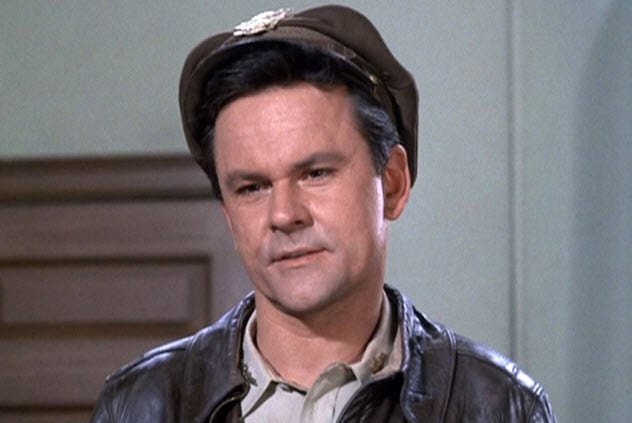
Bob Crane became a household name after landing the lead role in the sitcom Hogan’s Heroes. In 1978, the 49-year-old actor was found bludgeoned to death in his apartment. He also had an electrical cord tied around his neck.
Although the murder weapon was never identified, the most likely candidate was a camera tripod. Police suspicion immediately fell on John Henry Carpenter, a friend of Crane who sold video equipment. After his death, it came to light that Crane routinely picked up women and filmed himself having sex with them, often joined by Carpenter. The latter was in town spending time with Crane, and blood smears were found on Carpenter’s rental car.
Fearing lack of evidence, the prosecution initially declined to charge Carpenter. It wasn’t until 1992 that he was charged with Crane’s murder after DNA testing on the blood became possible. However, the tests were inconclusive and the defense successfully argued that many other people, including filmed women and their angry partners, had motive to kill Crane. Carpenter was acquitted but remained guilty in the eyes of the public.
Things took a new turn in 2016 when a news anchor successfully petitioned authorities to do another DNA test using modern technology. The results showed that the blood on Carpenter’s rental car didn’t belong to Bob Crane. The actor’s son, Robert Crane Jr., was visibly surprised by the results. He then directed suspicion at his stepmother, Patricia Olson, who was the sole beneficiary of Crane’s will.
7 What Happened Aboard the Carroll A. Deering?
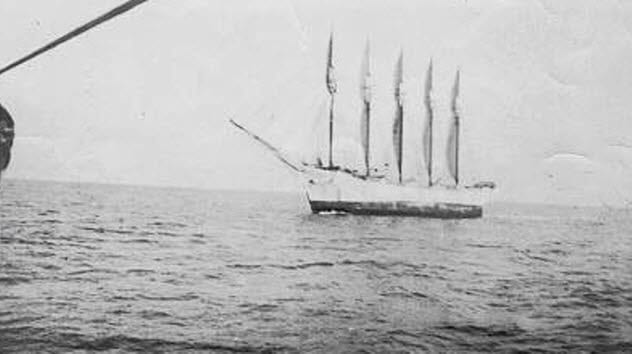
It’s been almost 100 years since the five-masted schooner Carroll A. Deering ran aground on Diamond Shoals off Cape Hatteras. Commonly referred to as the “Graveyard of the Atlantic,” Cape Hatteras had seen its fair share of ships sink to Davy Jones’s locker. The Deering, however, was completely intact, except that its crew had disappeared.
The schooner was spotted on January 31, 1921. However, bad weather made the ship unreachable for four days. When authorities finally were able to inspect it, they found that all crew members had vanished, along with their personal belongings, ship’s log, navigation equipment, and two lifeboats.
The place where the schooner ran aground became its final resting place. Due to the Deering being a hazard to other ships, it was scuttled and dynamited.
Multiple investigations were launched to determine the fate of the crew. Some believed that it was a simple case of mutiny. Others thought that the ship had been overtaken by rum smugglers coming from the Bahamas. Some thought that the crew had abandoned ship to escape a hurricane.
A theory regarding Bolsheviks targeting US ships was popular with anti-communist groups of the time. As the crew was lost somewhat near the Bermuda Triangle, some people offered supernatural explanations.
The investigation was closed in 1922 without an official conclusion. Despite exhaustive searching, the crew of the Carroll A. Deering was never seen again.
6 What Happened To The Lady Of The Swamp?

Margaret Clement’s father started out as a cattle farmer in Scotland but later made successful mining investments in Australia. By the time he died in 1890, he left his widow and five children a fortune.
Margaret spent the first half of her life in luxury. Two of her sisters married and went their own way. In 1907, Margaret, her sister Jeanie, and their brother Peter bought Tullaree Mansion in Gippsland. It was a lavish house but was surrounded by rough terrain, mostly swamp.
After Peter married and left in 1912, Margaret and Jeanie found out that they lacked the business acumen and know-how to run a farm. By the 1920s, a series of poor choices left the sisters in financial trouble. They became recluses.
It wasn’t until 1950 when Jeanie died that the public found out just how far the Clements had fallen. Tullaree Mansion was in shambles—it needed repairs, lacked basic amenities, and was surrounded by dense shrubbery. Stories of the strange old lady who spent her time reading mystery novels by a lamp, accompanied only by her dog, Dingo, led to Margaret being nicknamed the “Lady of the Swamp.”
In 1952, the Lady of the Swamp disappeared. Many suspected her neighbors, Stanley and Esme Livingstone. Others accused Margaret’s nephew, Clement Carnaghan, whom she had disinherited a while before her disappearance.
Some believed that the old lady fell prey to the perils of the swamp. It was also speculated that Margaret committed suicide someplace else, trying to leave behind a great mystery like the ones in her beloved novels.
5 How Did Eugene Izzi Die?

Eugene Izzi enjoyed a successful career as a writer of hard-boiled detective stories set in his hometown of Chicago. However, the most enduring mystery he left behind was that of his untimely death.
Izzi died on December 7, 1996. His body was found dangling outside his 14-story office in downtown Chicago. He was hanging from a rope tied to a steel desk located in his office. At first glance, it seemed like a straightforward suicide case (and that was the official ruling). However, the details made the death seem straight out of a mystery novel.
For starters, there was a lack of motive. Friends and family found it hard to believe that Izzi would commit suicide, particularly as he had a new book coming out. More bizarre, however, was the fact that the writer was found wearing a bulletproof vest. In his pockets, police found brass knuckles and mace. There were reports that Izzi also had a .38-caliber revolver in his office.
Did Izzi have a reason to fear for his life? Friends claimed that he had infiltrated a paramilitary group in Indiana as research for a new book. He had received at least one threatening voice mail. This was further supported by an article submitted to the Chicago Sun-Times where Izzi attacked militias and hate groups.
4 Who Was The Zodiac Killer?

The Zodiac remains one of the most infamous serial killers in history, primarily because his identity still eludes us. A lot of people became convinced that Arthur Leigh Allen was the Zodiac.
Others, however, feel that there are several pieces of evidence working against Allen as the killer. He didn’t resemble the sketch, his handwriting didn’t match that of the letters sent to taunt police, and his DNA didn’t match the partial DNA profile obtained from the envelopes.
Almost four decades old, the case had been labeled inactive for a while before being officially reopened sometime around 2007. Over the last decade, investigators looked into a handful of new suspects.
Three men came forward claiming their fathers were the Zodiac Killer. Among them was retired detective Steve Hodel who had previously argued that his father, George Hill Hodel Jr., was responsible for the Black Dahlia murder.
Two other men claimed that they received confessions regarding the Zodiac killings. One of them was a lawyer named Robert Tarbox who said a sailor walked into his office during the 1970s and confessed to being the Zodiac. Tarbox kept the secret for 30 years due to confidentiality agreements. The other man, Randy Kenney, claimed that his friend Louie Myers confessed to being the Zodiac on his deathbed.
One final suspect was offered by retired highway patrol officer Lyndon Lafferty. He is part of a group of retired officers turned amateur sleuths called the Mandamus Seven.
They identified Zodiac as a former real estate agent living in Fairfield, California, who died in 2012. The group presented him under the pseudonym George Russell Tucker. The Mandamus Seven claimed that there was a conspiracy behind the investigation. Tucker’s wife was having an affair with a judge who diverted investigators’ attention.
3 What Happened To The Girl In The Green Mac?
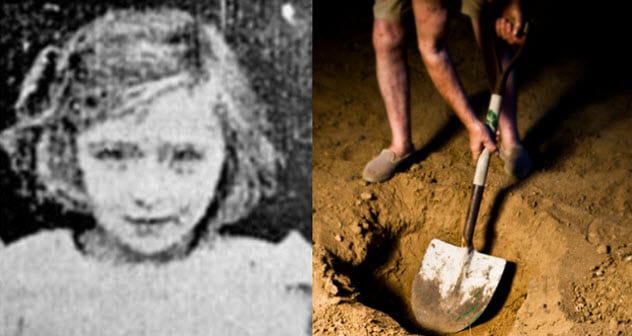
On August 18, 1944, six-year-old Sheila Fox was heading home from school in Bolton, Lancashire. However, she never arrived that night. Police and volunteers organized a search party but couldn’t find any trace of Sheila. According to witnesses, she was last seen in the company of a young man in his mid to late twenties, well-dressed, clean-shaven, and with a slim build.
The media nicknamed Sheila the “Girl in the Green Mac.” Although her disappearance was soon overshadowed by wartime events, this mystery was never forgotten. The search resumed 57 years later.
This renewed investigation came courtesy of a tipster who recalled seeing a neighbor digging a hole in his garden the night that Sheila disappeared. A little research revealed that the man living in the house in 1944 was 20-year-old Richard Ryan who was later convicted of rape and charged with child assault in different cases.
Despite the promising lead, police found nothing in Ryan’s former garden. Some investigators tried to connect Fox’s disappearance with similar cases involving children from around that time, working under the assumption that the cases were the work of the same man. There are no solid leads yet.
2 How Did Marvin Clark Disappear?
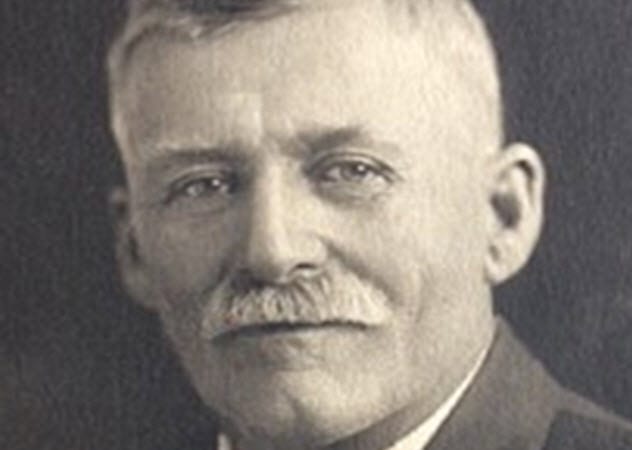
Marvin Clark was born in 1851 and disappeared in 1926 in Portland. He also has the unfortunate distinction of being the oldest active missing persons case in the United States. Clark vanished during Halloween weekend when he left his home in Tigard, Oregon, to visit his daughter who managed the Hereford Hotel in Portland.
Initially, papers reported that Clark went to Portland by stagecoach and disappeared sometime during or after the ride. The story was later corrected to say that Clark traveled by bus and was last seen getting off at the terminal in Portland.
There were some alleged sightings of Clark over the years. The first solid lead, however, didn’t come until 1986 when a John Doe was discovered in the woods between Tigard and Portland. He had a few era-appropriate items but was also found with a revolver and a spent casing. This, along with a bullet hole in his skull, led examiners to rule his death a suicide.
Clark’s granddaughter, Dorothy Willoughby, came forward to suggest that the John Doe might be her grandfather. However, there was no way to make a positive identification at the time.
Willoughby died in 1991, and the case went cold again. It wasn’t until 2011 that the case was reopened. After obtaining a good sample from the skeleton, genealogists have been searching DNA databases, looking for maternal descendants of Clark for a DNA comparison.
1 What Happened To Dorothy Arnold?
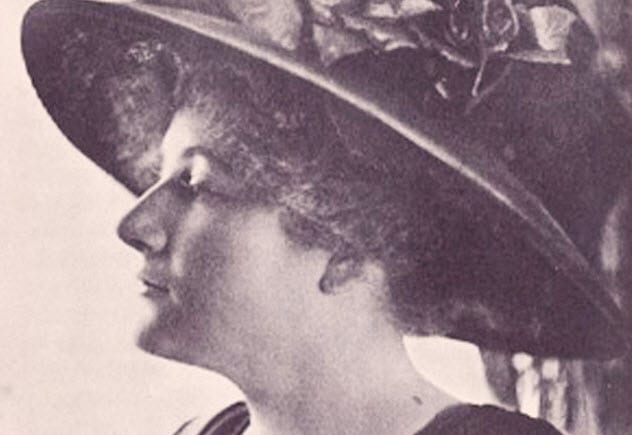
On the morning of December 12, 1910, 24-year-old New York socialite Dorothy Arnold went out shopping. She roamed Fifth Avenue for a bit before running into a friend named Gladys King. Upon leaving, King noted that Arnold planned to walk through Central Park. King was the last person to see Dorothy Arnold.
By that evening, the Arnold family realized something was wrong. They turned for help to their lawyer, John Keith, trying to keep the matter private. Keith advised them to hire Pinkerton detectives to look into Dorothy’s disappearance discreetly.
Investigators checked out Arnold’s usual spots. They also visited local hospitals, jails, morgues, and even insane asylums but found no trace of her. Detectives also considered the possibility that she had eloped with a secret lover to Europe. Pinkerton detectives went overseas but found nothing.
The Arnolds knew (and disapproved of) Dorothy’s lover, George Griscom Jr. He was vacationing with his family in Florence when Dorothy disappeared. The Arnolds went to see him but found no trace of their daughter. Reluctantly, after six weeks with no leads, the family alerted the police. Even more reluctantly, they agreed to tell the public and offer a $1,000 reward.
Two ransom notes were dismissed as hoaxes. So was a postcard signed by Dorothy. Some believed that she had committed suicide, either because of her forbidden affair with Griscom or her failed writing career.
Her father thought that she had been killed in Central Park and dumped in the water reservoir. A convict claimed that he was paid to get rid of a body matching Arnold’s description.
One popular theory opined that Dorothy had died getting an illegal abortion and her body had been cremated. There were plenty of tips regarding Arnold’s disappearance, but none of them panned out.








